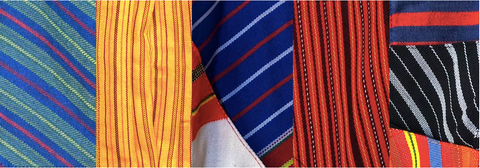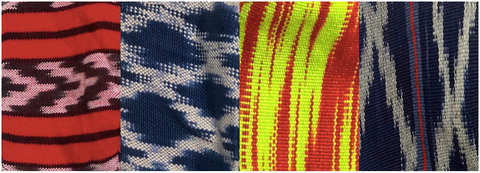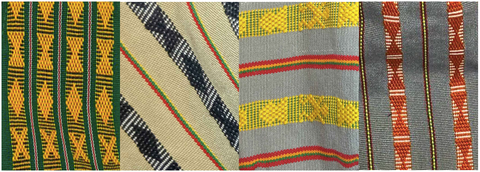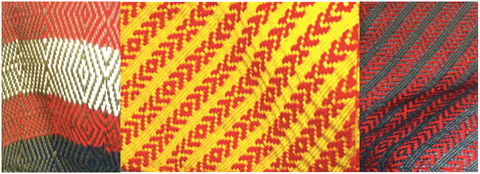Ifugao Weaving Techniques
Not all weaves are made equal. Some are hand-dyed, some are plainly handwoven, and some require a little bit more attention to detail than others.
Here's a primer on the 4 techniques that we practice.

KINULHUDAN
[plain stripes]
The basic form of weaving among the Ifugaos. Strips of different colored threads are arranged on the loom and woven to create patterns.

BINOBODAN
[resist-dyeing]
In this technique, the patterns are constructed during the dyeing process. The designs are played out in the weaver's mind before the prepared threads are tied and wrapped. The cloth is then dyed and the pattern is revealed once the threads are unwrapped and woven together.

NILIHHA/PINILLI
[supplementary warp]
Pre-colored threads are used to incorporate designs and patterns in the fabric as it is woven. In the leftmost photo, the orange threads (vertical, warp) are raised and put back to create symbols and motifs against the green threads (horizontal, weft).

BALUD
[supplementary weft]
This technique is usually used for women's belts and funerary blankets. As shown in the middle photo, weft threads (horizontal, red) are inserted through the warp threads (vertical, yellow) to create patterns.